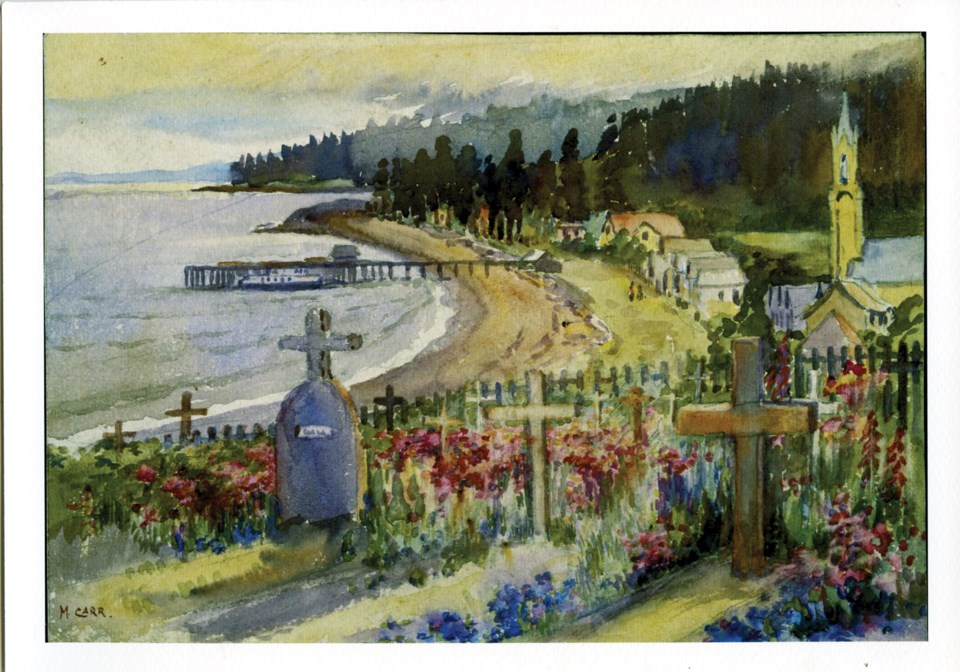Between 1898 and 1908 Emily Carr travelled a number of times up and down British Columbia’s coast painting First Nations people, villages, totem poles and our forests of giant trees. Recognized as one of Canada’s foremost artists, she studied in San Francisco, London and Paris and her work was acknowledged by the Group of Seven. She was also an accomplished writer whose books are still in print 74 years after her death.
Emily Carr painted a watercolour of the Sechelt First Nation village in Trail Bay around 1907 when on her way to stay at a friend’s summer camp accompanied by her dog, an Australian cockatoo and a turkey buzzard. The turkey buzzard had adopted her while she was painting the village. He lived in her Vancouver apartment until he grew too big and a large cage in Stanley Park became his home. His story can be found in her book Heart of Peacock. The original painting, titled “Sechelt St. of Georgia,” is part of the Emily Carr collection in the British Columbia Archives in Victoria.
“Time was marked by centuries in this cemetery. Years – little years – what are
they?... insignificant,” is the caption for the painting taken from Emily's book Klee Wyck.
The cemetery was blessed by Rev. Father Paul Durieu in 1873. We see the village from above it with the landmark, newly built, Our Lady of Lourdes Church on the right. This church replaced the twin-spired Our Lady of the Rosary Church which had burned down in 1906. Immediately plans were drawn up for a new church and Our Lady of Lourdes was completed in 1907. For 63 years this white church was a landmark for mariners sailing off the Sechelt Peninsula until it too was destroyed by fire in 1970.
The pier jutting out into Trail Bay was built by Herbert Whitaker and the steamer berthed there may be his steamship Sechelt, which brought passengers and goods to his hotel, cottages and general store.



